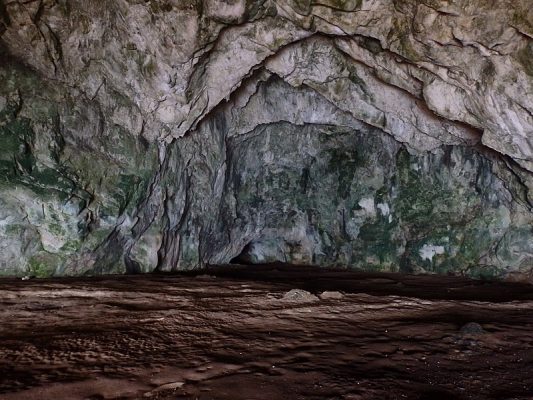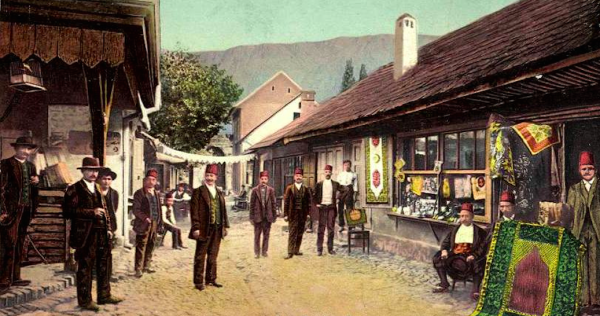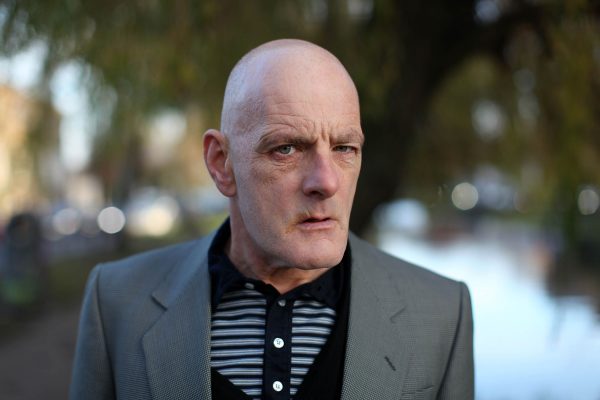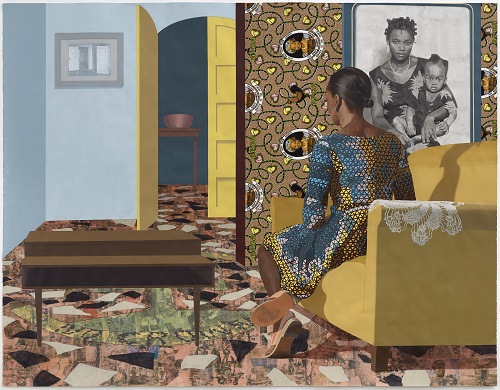‘What man is, whatever man is under the eye of heaven, that I burn to know and that – I do not say this lightly – I would endure knowing.’ This line was delivered by William Golding in a 1980 lecture titled ‘Belief and Creativity’, where he argued that the knowledge of our deepest nature may not be a precious gift, but a fearful burden. A similar insight lies at the heart of Edoardo Albinati’s The Catholic School, a vast autobiographical novel inspired by a horrifying crime that took place in Italy during the Seventies. Over the course of twelve hundred and sixty-three pages the novel moves from a detailed recreation of Roman society at this time to a rigorous, even remorseless account of all that is most damaging about male identity. In the process, it tests the reader’s own powers of endurance, and might even provoke a few to wonder whether some truths should never be spoken, some confessions left unsaid.
In 1975 three wealthy young Italian men picked up a pair of working-class women in their late teens, took them to a villa in the coastal resort of Circeo, drugged them, beat them, raped them, and then attempted to kill them. Their inert bodies were later locked in the boot of a car and driven back to Rome, only for the police to find the vehicle, open the boot and discover that one of the girls had somehow survived, lying wrapped around the corpse of her friend. Two of the murderers were recent graduates of the Instituto San Leone Magno, a prestigious boarding school run by priests, and their privileged upbringings, along with their links to various far-right movements, resulted in a media sensation which for many came to symbolise the degeneracy of an entire decade. Edoardo Albinati attended the same school between the late Sixties and the early Seventies, and grew up in the same neighbourhood as the killers. Ever since, the crime has haunted his mind, eventually prompting him to ask how much he had in common with these young men.
For its first few hundred pages, The Catholic School makes vivid this setting, capturing the way that adolescent insecurities become intensified in the hothouse atmosphere of a boarding school. Albinati portrays the institution as a perfect breeding ground for dysfunctional models of masculinity, its students forever attempting to outdo one another with acts of aggression and displays of machismo. These included casual homophobia, regular rule-breaking, a steady stream of obscene stories, and persistent feats of physical intimidation. More often than not the intimidation was targeted at other boys, which created a bullying culture that placed each pupil on high alert, always guarding against mockery and ridicule. Consequently, students kept their true feelings hidden for fear of making themselves vulnerable, which resulted in a brittle sense of self-worth built on repression. Such shows of repression were encouraged by the priests in charge, whose stoical code of morality bordered on the masochistic, as well as by the affluent households in which these pupils were raised, where euphemism and restraint were considered evidence of good breeding.
Though the boys at the school obsessed over the opposite sex, girls remained utterly unfamiliar to most. For all that the priests idealised women, Albinati writes, the only female presence on campus was the Virgin Mary. ‘Chastity is a very particular variation on sexual brutality,’ he adds, leaving us to decide who were the victims here – the clergy, the pupils in their charge, or the girls they occasionally encountered. The majority of these encounters were rushed, disappointing affairs, and the ones who did best during brief ventures beyond the school gates were either the most reckless or else the most ruthless. As a result, relations with girls were reframed as something competitive, and many of these boys grew up incapable of treating women as equals, instead seeing them as obstacles to sexual success who must be tricked, manipulated, or even overpowered. And this confrontational perspective lasted long after the young men had left the school, meaning the narrator can claim that ever since he has been ‘licking the real and imaginary wounds produced by that segregation.’
The book’s opening chapters are carried forwards by a sense of anxious anticipation. The blurb makes clear that a crime is coming, yet the reader cannot tell which schoolboys will be involved. But when the attack arrives a third of the way through, the incident is introduced without any warning and recounted in barely a dozen pages. Albinati has little interest in what took place during the visit to the villa: The Catholic School is neither a painstaking work of true crime nor a fictional reimagining of the facts, but an exploration into how an entire culture can foster a set of killers. The murder offers a reason to conjure once more the city, the country and the class from which these boys emerged, and this broadening of focus also broadens our sense of responsibility. At times, Albinati suggests that the murderers were indistinguishable from every other student at the school, and that given the opportunity they might all have committed the crime. Though the two victims are referred to by their initials – Rosaria Lopez (RL) and Donatella Colosanti (DC) – the culprits are only identified by nicknames – Angelo, Subdued, and the Legionnaire – so that the reader remains unsure whether they include the narrator’s friends. Even when it becomes clear that Albinati was never close to the killers, a number of accidental links tie his own circle to the crime, and as we later learn, several of these students went on to their own careers of violence, criminality, and political extremism.
This lack of interest in the details of the murder is one of many ways The Catholic School resembles few conventional crime novels. In addition, the narrative is frequently suspended for long essays discussing the aims of religious education or the etiquette of bourgeois society, the psychological draw of fascism or the internal politics of Italian prisons, as well as a hundred-page dissertation on rape that interrogates every possible connection between sex and violence. Digressive essays have been a feature for both the autofictional sagas of recent decades and the modernist epics of a hundred years earlier, but what this novel resembles most closely is one of those monumental treatises from the nineteenth century, where a single insight about human nature is applied to every facet of experience. And, even though the author mixes in aphorisms and anecdotes, childish jokes and schoolboy slang, sermons and interviews and comic email exchanges – each shift in tone well served by Antony Shugaar’s dextrous translation – the extended passages of philosophical prose soon start to overwhelm.
So, what is the insight at the centre of The Catholic School? Almost from the start Albinati makes the case that fear is the emotion which dominates the minds of young men – fear not for their physical wellbeing, but for their fragile sense of pride. They fear humiliation from the men they admire, embarrassment from the women they desire, and rejection from the groups they wish to join. However, when men are helpless to express this fear, or even recognise it within themselves, the emotion typically manifests as violence, either directed at those younger and weaker than they, or else is turned inwards. For all that adolescent boys can be reckless, arrogant, aggressive, Albinati argues that these are masks used to protect their pride against insult and injury, while their displays of dominance are attempts to disguise a deeper lack of strength. ‘They get themselves into all kinds of trouble,’ the narrator claims. ‘They don’t know how to handle the losses and wounds inflicted on their perennially developing masculinity, and above all, they don’t want to talk about it, and they won’t tolerate having others talk about it. They remain humiliated forever by the compromises that growing up costs them.’
Of course, such insecurities exist not only in an all-boys’ boarding school, but can be found among men at every stage of life. This may explain why, though the events of the novel move beyond the years of the author’s schooling, he never abandons this adolescent perspective. As a result, the novel pays little attention to the two young women who were victims of the crime, neither describing their lives prior to the attack, nor investigating the families they left behind. With almost thirteen-hundred pages available, a lack of space cannot be the reason why, nor a scrupulous attempt to obey the limits of memoir, given that the book was published as a novel. When the narrator explains this refusal to imaginatively enter these lives – ‘The truth is that victims have no appeal, no one pays any attention to them’ – his brattish tone suggests a deliberate attempt to keep the reader confined within the self-absorption and stunted empathy of a teenage boy. In other words, the book embodies the damaging model of male identity it seeks to examine, sharing the pathologies of the young delinquents who populate its pages. What’s more, over time the content of these essays becomes increasingly disturbing. The narrator claims at one point that ‘The loss of dignity is a crucial condition of any sexual enjoyment,’ and states at another: ‘If sex doesn’t manifest itself as an obsession, then it hasn’t manifested itself at all.’ ‘Virility, then, is measured by the ability both to protect women and assault them,’ he goes on to argue, also writing that, ‘To kill is an extreme way of making something yours … If I desire someone, I can make them wholly mine by taking their life.’
It’s hard to know who’s speaking here, for Albinati often tries to voice the views of his friends, of his class, of his generation even, as well as articulating the motives of the killers. But he rarely makes clear whether he is endorsing such views or exposing them to ridicule, nor does he distinguish which opinions are his own and which belong to the society around him, while the translation faithfully preserves this ambiguity, even ambivalence, throughout. However, the question of authorship matters, because on one reading the narrator is setting out a series of inadmissible truths about the human condition, and in particular the male psyche, that make this a brave book, as well as a valuable addition to contemporary conversations about gender. But, on another reading the narrator is expressing a series of crackpot theories shared by a few predatory adolescents and sexually frustrated middle-aged men, in which case the novel’s size seems an unforgivable indulgence. Which reading is correct – a vital attempt to articulate the depths of the male mind, or an exhaustive catalogue of ugly ideas from the fringes of modern masculinity – depends on how widely these insights apply. That said, the insights are troubling enough that most readers would probably prefer to dismiss them as paranoid or perverse, rather than admit to such failings in themselves, let alone recognise them in their fathers, brothers, husbands, sons.
Yet Albinati makes just such an admission, and by refusing to detach his own voice from that of the killers, implies that he too carries some guilt for what happened. In this way, The Catholic School’s horrors are not to be found in the account of the Circeo Massacre, but in the author’s willingness to confess the basest parts of his character, to reveal all the lust, all the pride, all the fear that he feels. Confession only works if you tell the whole truth, for the intention is not to worsen a sinner’s sense of guilt, but to set them free them from the burden of shame, of regret, of self-reproach. Similarly, despite the book’s monumental proportions, Albinati has little wish to memorialise what happened, only to release himself from its memory, as he suggests in the one passage that comes closest to prayer: ‘I write about it, in fact, not to commemorate it, but in order to ensure that it’s sealed and forgotten once and for all. By me, at least. I’m enclosing it in this book as if I were burying it. Amen.’
Both fiction and faith can give a sense of purpose to events that might otherwise seem futile, and though the narrator remains an unbeliever to the book’s final page, he relies on Christian symbolism to arrange his disparate material into a pattern of sorts. ‘We don’t use imagination to flee from this world,’ Albinati writes towards the end, in an observation that applies to religion as much as art, ‘but rather to inhabit it without going mad, and in order to attempt to live in it by giving the meaning that it lacks.’ During these latter chapters we also learn the fates of the narrator’s various schoolfriends, the most brilliant of whom was imprisoned after setting fire to a mountainside. The account of the arson attack forms a lyrical climax to the book, capturing the simultaneous beauty and horror of the spectacle, as an entire forest goes up in flames, leaving behind a wasteland of burnt undergrowth and blackened vegetation layered over with ash. Fire is the element of purification in Christian theology, while ash is the symbol of repentance in the liturgical life of the Church, and the penitential possibility of this crime is made explicit in a series of questions that follow soon after, lifted from the notebooks of a teacher at the school: ‘Can there be regeneration that has nothing to do with violence? How can anything be reborn if it hasn’t first been destroyed? Can you pass from one order to another without there being an interval of chaos? Those who point the way to salvation glimpse it through a wall of flames. The higher those flames leap, the sooner we will burn, and the sooner we will be restored.’
The Catholic School may well be the first step towards such a restoration, yet the book reads less like an act of atonement than a penitential rite. Fire is also the element of punishment in the traditional Christian cosmos, and though it seems lazy to invoke Dante when reviewing an Italian author, perhaps the best way of understanding the novel is as a modern-day Inferno, with the flaws and failings of contemporary masculinity arranged like so many sinners, suffering the torments of the damned. As much as Albinati’s descent into the underworld offers moments of brilliance, of beauty, of gruesome humour too, we keep reading in the hope of salvation, though such salvation requires nothing less than a reckoning with the very darkest parts of the author’s soul. However, we should be grateful for any author who has the courage to drop to the depths of the abyss and then rise up once more to share what they have seen, or rather to sink through the shadows within themselves and then speak honestly of all that they find there.




